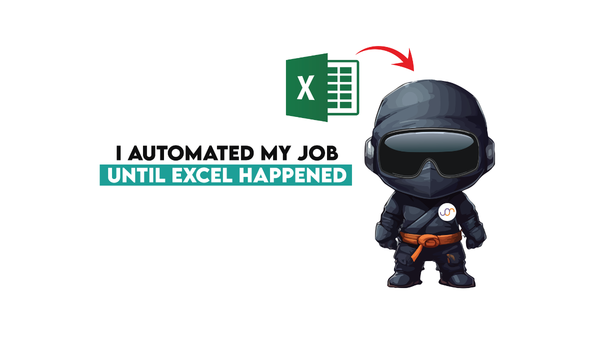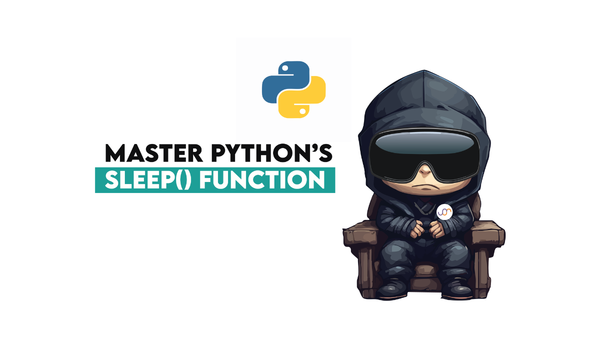Data Architect Interview Questions You Should Be Prepared to Answer

Categories:
 Written by:
Written by:Nathan Rosidi
A deep dive into conquering data architect interview questions: an in-depth exploration and strategic preparation guide for aspiring data architects.
Stepping into a data architect interview can be a nerve-wracking experience, especially when you're unsure of what questions might come your way. It's only natural to feel this way, especially when the role you're eyeing is as substantial and pivotal as that of a data architect.
Luckily, this guide is here to help you maneuver through potential interview questions you might encounter. This article is designed to cater both to newcomers dipping their toes in the field and seasoned professionals aiming to solidify their stance, and strives to be your trusty companion steering you through the maze of potential questions.
In this article, you will embark on a journey that meticulously unravels the most asked data architect interview questions, dissecting each one to provide you with the best strategies to construct your responses. Whether you are a newbie or a seasoned professional, we've got you covered. So sit back, relax, and let's dive in!
Preparing for the Data Architect Interview
Before you even set foot in the interview room, there's a lot you can do to set yourself up for success. In the following subsections, we will guide you through essential preparatory steps you can take:
- Research Company Background
- Understand the Job Description
- Review Relevant Technologies
- Interview Questions
In the end, the Data Architect Interview Questions, which are the meat of the matter, will be divided into three key categories:
- SQL
- Python
- Behavioral Questions
By the end of this section, you should have a solid understanding of what to expect and how to prepare for your data architect interview. So let's get started!
Research Company Background
Understanding the company's history, mission, and values can give you a leg up in the interview. Research the company's recent projects and familiarize yourself with their perspective.
A great start could be to check their official website and recent publications. Remember, knowledge is power!
Understand the Job Description
The job description is like a roadmap to the data architect interview questions you might face. Pay special attention to the skills and experiences they seek in a potential candidate.
Tailor your responses to showcase how your background aligns with the job description. This could be your secret weapon to stand out in the interview.
Review Relevant Technologies
In the constantly changing tech environment, keeping track of the latest technologies is a must. Focus on the tools and technologies mentioned in the job description. It could range from understanding database management systems to mastering big data technologies.
And remember to get a grasp of the company-specific tools that might be mentioned during the interview.
Data Architect Interview Questions

Now, let’s see the data architect interview questions, starting with SQL and going to behavioral questions. By practicing these questions, your confidence level will increase to the top, which will give you to show the best version of yourself.
Data Architect SQL Interview Questions
Being proficient in SQL is a non-negotiable for a data architect. You'll be asked to manipulate and retrieve data, often in complex ways.
In the following parts, we will go into questions from the City of Los Angeles, Meta, and the City of San Francisco to test your ability to filter records, calculate averages, and find medians—core functionalities you'd need daily.
Finding all inspections
In our first SQL data architect interview question, the city of Los Angeles asks you to find all inspections that are part of an inactive program.
Find all inspections which are part of an inactive program.
Table
Link to this question: https://platform.stratascratch.com/coding/10277-find-all-inspections-which-are-part-of-an-inactive-program
In this query we will fetch records from a table where the program_status is ‘INACTIVE’. It uses a simple WHERE clause for this. Let’s see the code.
SELECT
*
FROM
los_angeles_restaurant_health_inspections
WHERE
program_status = 'INACTIVE'
Here is the expected output.
Average Session Time
In our second question, Meta asks you to calculate users by average session time.
Last Updated: July 2021
Calculate each user's average session time, where a session is defined as the time difference between a page_load and a page_exit. Assume each user has only one session per day. If there are multiple page_load or page_exit events on the same day, use only the latest page_load and the earliest page_exit. Only consider sessions where the page_load occurs before the page_exit on the same day. Output the user_id and their average session time.
Table
Link to this question: https://platform.stratascratch.com/coding/10352-users-by-avg-session-time
In this more complex SQL query, we will see the use of a Common Table Expression (CTE) and window functions to calculate the average session duration for each user.
Our CTE calculates the session duration for each user and day. The final query then calculates the average session time. This will track how long users typically spend on a website. Let’s see the code.
with all_user_sessions as (
SELECT t1.user_id, t1.timestamp::date as date,
min(t2.timestamp::TIMESTAMP) - max(t1.timestamp::TIMESTAMP) as session_duration
FROM facebook_web_log t1
JOIN facebook_web_log t2 ON t1.user_id = t2.user_id
WHERE t1.action = 'page_load'
AND t2.action = 'page_exit'
AND t2.timestamp > t1.timestamp
GROUP BY 1, 2)
SELECT user_id, avg(session_duration)
FROM all_user_sessions
GROUP BY user_id
Here is the expected output.
Median Job Salaries
In our final question, the city of San Francisco asks you to find the median job salaries for each job.
Find the median total pay for each job. Output the job title and the corresponding total pay, and sort the results from highest total pay to lowest.
Table
Link to this question: https://platform.stratascratch.com/coding/9983-median-job-salaries
Here, we will use the PERCENTILE_CONT() function to find median salaries for each job title. You're essentially asking the database to line up all salaries and find the middle one for each job title. Let’s see the code.
SELECT jobtitle,
PERCENTILE_CONT(0.5) WITHIN GROUP(ORDER BY totalpay) as median_pay
FROM sf_public_salaries
GROUP BY 1
ORDER BY 2 DESC
Here is the expected output.
Data Architect Python Interview Questions
Python is another tool often used by data architects for data manipulation and analysis.
In this article, we will go into the questions from Yelp, Box, and Amazon to test your ability to use Python for filtering, aggregation, and ranking tasks, all essential for data architects.
Yelp Pizza
In our first Python data architect interview question, yelp asks you to find the number of Yelp businesses that sell pizza.
Find the number of Yelp businesses that sell pizza.
DataFrame
Link to this question: https://platform.stratascratch.com/coding/10153-find-the-number-of-yelp-businesses-that-sell-pizza
In this following code, we will filter out businesses that sell pizza based on the 'categories' column. The length of this filtered DataFrame will be the output. Let’s see the code.
import pandas as pd
import numpy as np
pizza = yelp_business[yelp_business['categories'].str.contains('Pizza', case = False)]
result = len(pizza)
Here is the expected output.
Class Performance
In the next question, box asks you to evaluate class performance.
Last Updated: December 2020
You are given a table containing assignment scores of students in a class. Write a query that identifies the largest difference in total score of all assignments. Output just the difference in total score (sum of all 3 assignments) between a student with the highest score and a student with the lowest score.
DataFrame
Expected Output Type
pandas.DataFrame
Link to this question: https://platform.stratascratch.com/coding/10310-class-performance
In the following question, we will add up scores from three different assignments box score into one and create a new column, total_score.
Then we will find the range by subtracting the minimum total score from the maximum. Essentially, the output includes the performance gap between the best and worst students.
Let’s see the code.
import pandas as pd
import numpy as np
box_scores['total_score'] = box_scores['assignment1']+box_scores['assignment2']+box_scores['assignment3']
box_scores['total_score'].max() - box_scores['total_score'].min()
Here is the expected output.
Best Selling Item
Here’s the final Python data architect interview question where Amazon asks you to find the best selling item for each month, where the biggest total invoice was paid.
Last Updated: July 2020
Find the best-selling item for each month (no need to separate months by year). The best-selling item is determined by the highest total sales amount, calculated as: total_paid = unitprice * quantity. Output the month, description of the item, and the total amount paid.
DataFrame
Expected Output Type
pandas.DataFrame
Link to this question: https://platform.stratascratch.com/coding/10172-best-selling-item
Here, we will calculate the total amount paid for each item in each month and rank them. It's like looking at monthly sales data and identifying the top seller for each month.
To do that, we will create new columns month, paid, and total_paid first. Then we will group our newly shaped dataframe and rank them. Here is the code.
import pandas as pd
import numpy as np
online_retail['month'] = (online_retail['invoicedate'].apply(pd.to_datetime)).dt.month
online_retail['paid'] = online_retail['unitprice'] * online_retail['quantity']
online_retail['total_paid'] = online_retail.groupby(['month','description'])['paid'].transform('sum')
result = online_retail[['month', 'total_paid', 'description']].drop_duplicates()
result['rnk'] = result.groupby('month')['total_paid'].rank(method='max', ascending=False)
result = result[result['rnk']==1][['month', 'description','total_paid']].sort_values(['month'])
Here is the expected output.
Data Architect Behavioral Interview Questions
These gauge whether you'd fit into the company culture and how you approach problems, teamwork, and challenges.
Solving Complex Data Problem
“Tell me about a time when you had to solve a complex data problem. How did you go about it?”
This data architect interview question is similar to a plot twist in a movie. The interviewer wants to know how you adapt and find a solution when faced with an unexpected challenge.
Your answer should demonstrate your problem-solving skills and ability to innovate and the best answer includes the real-life problem that you faced and solved.
Managing Time
“Tell me about a time you faced a strict deadline. How did you organize your time and resources to meet it?”
By asking this question, the interviewer is interested in your time-management skills and how you handle pressure. To answer that question, explain to the interviewer the technique that you used to make plans to manage time.
Collaboration
“Can you share an experience where you had to collaborate with other departments or teams for a data-related project? How did you ensure effective communication?”
This data architect interview question aims to test your communication skills and your ability to collaborate across different departments or teams.
If you want more questions, read this article, 40+ Data Science Interview Questions From Top Companies, which offers you 40+ more questions.
Final Thoughts
Stepping into a new career, such as data architect, can feel complex at first glance. However, by adopting a "divide and conquer" approach, you can turn this complex journey into a shorter and easier path.
This article has aimed to be your compass, steering you through SQL and Python-based questions, company research, and behavioral inquiries. Whether you're a newcomer or a senior, these insights provided here should give you the confidence to construct articulate and strategic responses to any question thrown your way.
But remember, the best preparation doesn't stop here. You need to practice what you learned to build a habit from your knowledge. StrataScratch offers a wide range of interview questions from companies worldwide, giving you an unparalleled edge in your job search.
The more you practice, the more you refine your skills, which eventually will increase your chance of landing that dream job.
FAQs
How do I prepare for a data architect interview?
To ace a data architect interview, first do your homework on the company's background, mission, and recent projects. Then, practice SQL, Python, and behavioral data architect interview questions that align with the job description and relevant technologies.
How do I prepare for data architect?
To prepare for the role of a data architect, focus on mastering SQL and Python, as they're essential tools in the field. Also, gain a solid understanding of database management systems and big data technologies that are mentioned in the job description.
What does a data architect do?
A data architect designs and creates the data architecture of a company, like laying down the blueprint for a building. They handle tasks like data storage, retrieval, and management, often using SQL and Python to do so.
What data architect should know?
A data architect should be proficient in SQL for data manipulation and retrieval. They also need to know Python for data analysis and should be skilled in database management systems. Soft skills like effective communication and teamwork are also key skills.
Share


